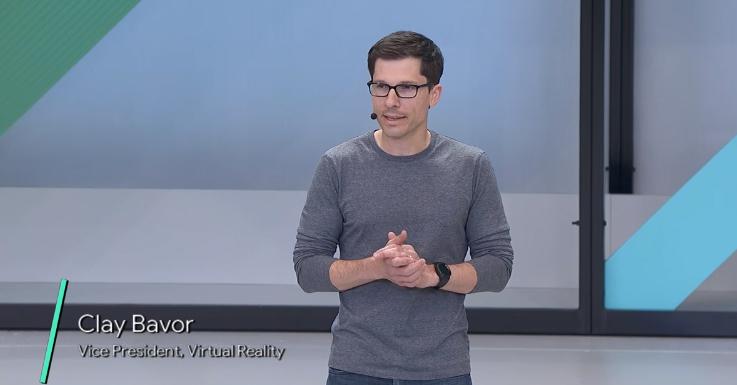"Portable Wi-Fi" Review
25/03/2022

Google hasn't made a big difference in AR / VR hardware since Daydream and Cardboard, but Facebook has changed its name to Meta, Metaverse has become a buzzword, and Apple's glasses devices are getting more and more accurate day by day. As it goes up, it seems that the development of original AR devices is progressing in-house.
According to the testimony that the link The Verge got from an anonymous Google official, the development name of the Google AR device is "Project Iris". Like the latest Pixel smartphones, it is a stand-alone type that runs on Google's own processor, and is said to be an AR device that seamlessly superimposes information on camera images from the outside world.
About 10 years ago, in 2012, Google announced the Google Glass, a smart glass that can be worn on regular glasses.
Google Glass is sometimes called AR in a broad sense such as "all AR if it is a wearable transmissive display" or "AR glass is superimposed on the view", but a small prismatic display is a small notification at the edge of the view. About displaying weather forecasts, video call images, etc. in 2D.
It is a product that aims to take over some functions such as camera shooting, video call, confirmation of flickering of notifications without holding a smartphone in hand, and Google has not pushed it as an AR device. bottom.
On the other hand, Project Iris, which is said to be under development, grasps the real environment by adding Google's favorite AI and machine learning processing to the information obtained by the outward camera, and virtual objects and information are displayed on the spot in real time. It is said to be a type of product that is displayed as if it were there.
According to this anonymous source information, Project Iris' development team has about 300 people, hires his CTO Paul Greco of Magic Leap, the 2024 release is the target and development is still in the early stages, at the moment it runs on Android etc. ..
The fact that Google is developing AR devices is publicly known information for a long time, and there are also job offers to recruit OS developers for AR.
The development team is said to be under the direct control of CEO Sundar Pichal, Clay Bavor, who is also responsible for ARCore, Google Lens, and Google Assistant, but Clay Bavor has long been responsible for the AR / VR field. And now that I'm the VP of Labs, a research and development department for future technologies, including AR, it's a normal category without any anonymous testimony.
As a matter of course, ARCore, which is an AR API for Android, is involved, and Google Lens is the basis of advanced AR glasses in that it grasps the image obtained by the camera and connects it with the information that Google has, and it is also a killer application. Become. It's easy to imagine that the assistant will also be deeply integrated as a voice-operated device rather than a screen tap.

His CTO Paul Greco of his Magic Leap, which is also funded by Google, has been rumored to be transferred for some time, but it can not be confirmed that he has joined Google from his LinkedIn profile etc. at the moment.
As for the form of the product, the prototype is in the shape of ski goggles, but it is completely unknown what the final product will be.
Speaking of Google and eyeglass terminals, in 2020, we acquired North, which was developing smart glasses Focal that looks like ordinary glasses.
Focal is not an immersive AR that seamlessly superimposes reality and virtual, but a type of device that superimposes a simple 2D display like Google Glass, but it will be the basis of future lightweight AR glasses in terms of optical technology. There is also the possibility.
Google officially announces acquisition of smart glasses North. Focal 2.0 is no longer available
What's interesting about Verge's article is that it connects Iris with Project Starline, a face-to-face chat device that isn't goggles or glasses.
Starline, which Google calls the "magic window," is a technology that combines a 3D display with 3D audio to give the feeling of being really face-to-face through the glass.
Google announces "Magic Window" 3D face-to-face device Project Starline.Realism with a stereoscopic display
Starline is not just a large stereoscopic display, it works by capturing the other party in real time in 3D and reconstructing it so that it looks natural from the other party's point of view.
Reconstruction of human beings with a sense of reality is a field that Meta also focuses on as an important technology of Metaverse including work and social communication.
Starline, which has a large light field stereoscopic display and 3D capture / compression / transmission technology, seems to be compatible with VR / AR as a device that can share the same space without goggles.
In VR / AR / XR and Metaverse, Meta is leading the way by building an ecosystem centered on game applications with Quest 2, but as a total effort aiming for the next platform of smartphones, to put it in a boring way, who will be 30% in 10 years Of course, Google doesn't seem to be looking at it with their fingers in the fight.
Google is building an AR headset --The Verge
This content is not available in your privacy settings. Please change your settings here. This content is not available in your privacy settings. Please change your settings here. This content is not available in your privacy settings. Please change your settings here. This content is not available in your privacy settings.Please change the setting here